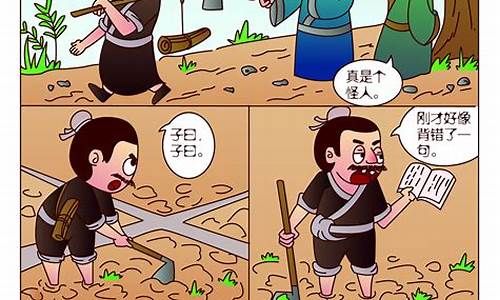1.请提供一些英文的小诗
2.暮光之城里面这句话是谁说的I love three things in this world. Sun, moon and you. Sun for morning,
3.如何鉴赏英文诗歌
4.赵元任英文打油诗意思求翻译
5.英语打油诗
6.limerick<五行打油诗》英文诗

上个月,一首“特别”的诗歌在微博、豆瓣等平台引起热议。这首诗歌正着读反着读都可以,但却是完全不一样的意思。
全文和译文如下:
I'm very ugly
我很丑
So don't try to convince me that
所以别试图说服我
I am a very beautiful person
我长得很好看
Because at the end of the day
因为说到底
I hate myself in every single way
我都恨我自己的一切
And I'm not going to lie to myself by saying
而我也不会骗我自己说
There is beauty inside of me that matters
内心的美才是最重要的
So rest assured I will remind myself
所以放心我会提醒自己
That I am a worthless
terrible person
我是一个一文不值还很糟糕的人
And nothing you say will make me believe
而无论你说什么也不会让我相信
I still deserve love
我仍然值得被爱
Because no matter what
因为无论如何
I am not good enough to be loved
我都不配被爱
And I am in no position to believe that
我也没有任何理由相信
Beauty does exist within me
我有任何美丽的痕迹
Because whenever I look in the mirror I always think
因为当我对着镜子我总是在想
Am I as ugly as people say?
我真的像别人说的那么丑吗?
这首诗正着读,似乎是在抱怨自己丑陋。但从后往前读,你会发现整首诗洋溢着自信。
Our inner talk and how we feel about ourselves is very important. Take a moment to think about how you are treating yourself on a daily basis.
和自己内心的交流以及对自我的感受非常重要。花一点时间思考一下你每天是如何看待自己的吧。
Don't let others define you. You define yourself.
别让他人定义你,你定义你自己。
仅仅换一个视角就会发现意思完全不同,既十分有趣又耐人寻味。
除了文字,诗歌的形式也可以表达思想感情。文学和历史上有很多“奇奇怪怪”的诗歌,接下来我为大家盘点几首。
1
苏轼曾在《书摩诘蓝田烟雨图》一文中评价王维:“味摩诘之诗,诗中有画;观摩诘之画,画中有诗。”(When reading Wang Wei’s poems
one can conjure up a picturesque image. When viewing Wang Wei’s paintings
one can experience a poetic sentiment.)以此体现出王维诗中悠远的意境。
而法国著名诗人纪尧姆·阿波利奈尔(Guillaume Apollinaire)的作品也是“诗中有画,画中有诗”的典范。与王维不同的是,阿波利奈尔真的将诗歌写成了一幅幅繁复美丽的图画。
阿波利奈尔创造了“图画诗”(le calligramme)这一名称,意思是以图画形式而非传统诗句形式呈现的诗。他被认为是超现实主义的先驱(a forebear of Surreali *** )。
In his poetry Apollinaire made daring
even outrageous
technical experiments. His calligrammes
thanks to an ingenious typographical arrangement
are images as well as poems. More generally
Apollinaire set out to create an effect of surprise or even astonishment by means of unusual verbal associations
and
because of this
he can be considered a forebear of Surreali *** .
阿波利奈尔在他的诗歌中进行了大胆,甚至是较为激进的诗歌实验。由于巧妙的排版设计,他的“图画诗”既是图画又是诗歌。简单说,阿波利奈尔通过非传统的言语关系来创造一种惊喜甚至惊奇的效果,因此,他被认为是超现实主义的先驱。
Coeur couronne et miroir
以《心,,镜子》(Coeur couronne et miroir)为例,这首诗分为三个部分:心形,图案和一个表示镜子的椭圆形,每个图案都由一句话组成。
以“”为例,这句话连起来应该是“死去的国王在诗人心中多次重生(Les Rois Qui MeuRent Tour A Tour Renaissent AU coeur des poéteS)”。
阿波利奈尔在前四个单词中设置了五个大写字母,横向排列,将单词其余部分置于第一排大写字母的下方。
但面对漏洞百出的生活,阿波利奈尔依旧心有所爱,一如他在《心》所传达的信念:“我的心啊宛如一朵颠倒的焰火。”
2
卡明斯(e. e. cummings)是美国二十世纪现代主义诗歌中的佼佼者,同时也是一位画家,他的诗作大都没有标点和大写字母。由于深受达达主义(Dadai *** )和立体主义(Cubi *** )的影响,他在诗歌创作中大胆地对诗歌的形式、语言等进行彻底改造,创造出一种全新的卡明斯式诗歌模式。
卡明斯十分注重语言的视觉效果,竭力把形象的美学原则运用到诗歌中去。他曾经在一封写给编辑的信中谈到:我最关心的是每一首诗画都要保持原样。比如下面这首著名的小诗画:
实际上这首诗是将a leaf falls(一片树叶飘落了)一句话插入loneliness(孤独)一个词之中。诗人又把这四个词拆开,排成垂直的一列,给人一片叶子孤独下落的图形,表现出一种绝妙的效果。
a leaf falls loneliness
3
埃兹拉·庞德(Ezra Pound)是美国著名诗人、文学家,意象主义诗歌的主要代表人物。
庞德的这首In a Station of the Metro虽然只有短短两行,当时一经发表,就轰动了整个欧美诗坛。他曾在1914年写道:
“三年前在巴黎,我从车站走出地铁车厢。突然间,看到一个美丽的面孔,然后又看到一个,接着是一个美丽的儿童面孔,然后又是一个美丽的女人。那一整天我努力寻找能表达我感受的文字,我找不出我认为能与之相称的、或者像那种突 *** 感那么可爱的文字。那个晚上……我还在继续努力寻找的时候,忽然找到了表达方式。并不是说我找到了一些文字,而是出现了一个方程式。……不是用语言,而是用许多颜色小斑点。……这种‘一个意象的诗’是一个叠加形式,即一个概念叠在另一个概念之上。”
in speech
but in little splotches of colour. It was just that - a "pattern
" or hardly a pattern
if by "pattern" you mean something with a "repeat" in it.
“6个月后,我写了一首比那首短一半的诗,一年后我写下日本和歌式的诗句(Haiku-like sentence)。”
Haiku
a poem with seven lines and usually 17 syllables
written in a style that is traditional in Japan
俳句,日本传统诗体,三行为一首,通常有17个音节。
这首诗是一个以意象作为叙述语言的典型范例。全诗只有短短两行,甚至构不成一个完整的句子,但却展现了一幅色彩丰富、构图生动的画面,颇有“枯藤老树昏鸦,小桥流水人家”之感。
In a Station of the Metro
The arition of these faces inthe crowd;
Petals on a wet
black bough.
人羣中,这些面孔的鬼影;
潮溼的黑树枝上的花瓣。
(余光中译)
4
十九世纪的英国还有一位幽默风趣、多才多艺的先生叫 *** 德华·李尔(Edward Lear)。他喜欢旅游,会玩音乐,还会绘画,尤其擅长画鸟兽。他闲来无事就喜欢写五行打油诗(limerick),还会随手配插图。
limerick
a humorous short poem
with o long lines that rhyme with each other
followed by o short lines that rhyme with each other and ending with a long line that rhymes with the first o
五行打油诗,幽默短诗,起始两长句押韵,中间两短句押韵,最后一长句与开头两句押韵。
“五行打油诗”用aabba式韵脚,中间两行稍短,读起来节奏分明,诗中的文字游戏和幽默一读便知。
一定要大声朗读,因为所有荒唐和无厘头的妙趣都藏在音韵节奏中。
There was an Old Man with a Beard
There was an Old Man with a beard
Who said
“It is just as I feared! —
Two owls and a hen
Four larks and a wren
He all built their nests in my beard.”
有个老头儿胡子一大把,
他说“这件事让我担惊受怕:
一对猫头鹰和一只小鹪鹩,
一只大母鸡和四只百灵鸟,
全在我胡子里搭了鸟窝,哎呀呀!”
请提供一些英文的小诗
Dog
smart?,?cute?
running?,?jumping?,eating
member?and?pet?too?
family
Summer?Sleepy,salty,dreading?Drying,dronping,dreading?Week?in,weet?ou
Summer?Sleepy,salty,dreading?Drying,dronping,dreading?Week?in,weet?out
暮光之城里面这句话是谁说的I love three things in this world. Sun, moon and you. Sun for morning,
The seasons
(Robert Stevenson)
Spring is gay with flower and song,
Summmer is hot and days are long,
Autumn is rich with fruit and grain,
Winter brings snow and the New Year again.
四季歌 (罗伯特'史蒂文森)
春歌荡漾百花香,
夏季炎炎白日长,
秋天满地丰收果,
冬雪吉兆新气象。
我会与你相伴 I Will Be There
If one day you feel like crying...
Call me.
I don’t promise that I will make you laugh,
But I can cry with you.
If one day you want to run away —
Don’t be afraid to call me.
I don’t promise to ask you to stop...
But I can run with you.
If one day you don’t want to listen to anyone...
Call me.
I promise to be there for you,
And I promise to be very quiet.
But if one day you call...
And there is no answer...
Come fast to see me,
Perhaps I need you.
如果有一天你想要哭,
呼唤我。
我不能保证把你逗笑,
但我会和你一起哭泣。
如果有一天你想要逃避,
尽管呼唤我。
我不能保证阻止你,
但我可以和你一起离开。
如果有一天你不想听任何人说话,
呼唤我。
我保证会在你身旁,
并且保持安静。
但如果有一天你呼唤我,
而没有回应,
快来到我的身边吧,
也许,我需要你。
Failing to Meet a Hermit
Jia Dao
I asked the boy beneath the pines,
He said,"The master has gone alone.
Herb-picking somewhere on the mount,
Cloud-hidden where abouts unknown."
寻隐者不遇
贾岛
松下问童子,
言师药去。
只在此山中,
云深不知处。
如何鉴赏英文诗歌
这句话出自出自印度诗人泰戈尔的《飞鸟集》诗集。
I?love?three?things?in?this?world.Sun,?moon?and?you.?
Sun?for?morning,?moon?for?night,and?you?forever.
其中文翻译为:在这个世界我只喜欢三件事,?太阳、月亮和你,太阳是为了白天而存在,月亮是为了夜晚,而你对我来说是永恒的。
文艺的翻译版本:浮世万千,挚爱有三,喷薄朝阳,皓婉皎月,不及汝尔,沧海桑田。
扩展资料:
原文如下:
I love three things in this world,the sun ,the moon and you.
在这个世界我只喜欢三件事, 太阳 ,月亮和你。
The sun for the day,the moon for the night,and you forever!
太阳是为了白天而存在,月亮是为了夜晚,而你对我来说是永恒的!
For the world you are somebody,but for somebody you are the world!
对于这个世界来说你只是默默无闻的普通人,但对于某些人来说你就是她的全部,是整个世界!
I opend my wallet and found it empty,reached into my pocket and found a few?coins,
我打开钱夹里面什么都没有,摸摸口袋找到了几个硬币,
searched my life and I found you!Then I realized how rich I am.
打开我的生活大门却发现你在哪儿,此时的我才意识到自己是多么的富足。
I drop a tear in the ocean and the day?you find it is the day I will stop loving?you !
我的一滴泪落入了大海,而当你找到那颗泪珠的那一天,就是我停止爱你的日子!
People laugh and people cry,some say hi while some bye,
人们哭的哭笑的笑,有人说“你好”有人说“再见”,
some give up and some always try,others may forget you but never will I.
有人轻易放弃而有人却永远尝试,其他人或许会把你遗忘,而我永远不会!
赵元任英文打油诗意思求翻译
英诗的欣赏:诗的格律、诗的押韵、诗的体式、诗的评判。诗以高度凝结的语言表达着人们的喜怒哀乐,用其特有的节奏与方式影响着人们的精神世界。诗讲究联想,运用象征、比喻、拟人等各种修辞手法,形成了独特的语言艺术。
一、 诗的格律 “格律是指可以用脚打拍子的节奏”,是每个音步轻重音节排列的格式,也是朗读时轻重音的依据。而音步是由重读音节和非重读音节构成的诗的分析单位。重读音节为扬(重),在音节上用“-”或“?”标示,非重读音节为抑(轻),在音节上用“?”标示,音步之间可用“/”隔开。以下是五种常见格式:
1. 抑扬格(轻重格)Iambus:是最常见的一种格式,每个音步由一个非重读音节加一个重读音节构成。
As fair / art thou / my bon/nie lass,
So deep / in luve / am I :
And I / will luve / thee still,/ my dear, Till a` / the seas / gang dry:
Robert Burns(1759-1796): My Luve Is like a Red, Red Rose
注;art=are luve=love bonnie=beautiful a`=all gang=go
上例中为四音步与三音步交叉,可标示为:?-/?-/?-/(?-)
2.扬抑格(重轻格)Trochee:每个音步由一个重读音节加一个非重读音节构成。
下例中为四音步扬抑格(少一个轻音节),可标示为:-?/-?/-?/-
Tyger!/ Tyger!/ burning / bright
In the / forests / of the / night
William Blake: The Tyger
3. 抑抑扬格(轻轻重格)Anapaestic foot: 每个音步由两个非重读音节加一个重读音节构成。如:三音步抑抑扬格?-/?-/?-
Like a child / from the womb,
Like a ghost / from the tomb,
I arise / and unbuild / it again.
4. 扬抑抑格(重轻轻格)Dactylic foot: 每个音步由一个重读音节加两个非重读音节构成。如:两音步扬抑抑格-?/-?
Touch her not / ?scornfully, Think of her / ?mournfully.- Thomas Hood
5. 抑扬抑格(轻重轻格)Amphibrach:每个音步由一个非重读音节加一个重读音节再加一个非重读音节构成。如:三音步抑扬抑格?-?/?-?/?-?下例中最后一个音步为抑扬格。
O ?hush thee / my ?babie / thy ?sire was / a knight.
在同一首诗中常会出现不同的格律,格律解析对朗读诗歌有一定参考价值。现代诗中常不遵守规范的格律。
二、 诗的押韵
押韵是指通过重复元音或辅音以达到一定音韵效果的诗歌写作手法。
1. 尾韵:最常见,最重要的押韵方式。
1) 联韵:aabb型。
I shot an arrow into the air,
It fell to earth, I knew not where;
For, so swiftly it flew, the sight
Could not follow it in its flight.
Henry Wadsworth Longfellow: The Arrow and the Song
2) 交叉韵:abab型。
Sunset and evening star,
And one clear call for me!
And may there be no moaning of the bar,
When I put out to sea,
Alfred Tennyson(1809-1892): Crossing the Bar
3) 同韵:有的诗押韵,一韵到底,大多是在同一节诗用一个韵脚。
如下例就共用/i:p/为韵脚。
The woods are lovely, dark and deep,
But I he promises to keep,
And miles to go before I sleep,
And miles to go before I sleep.
Robert Frost (1874-1963): Stopping by Woods on a Snowy Evening
2. 头韵:是指一行(节)诗中几个词开头的辅音相同,形成押韵。下例中运用/f/、/b/与/s/头韵生动写出了船在海上轻快航行的景象。
The fair breeze blew, the white foam flew,
The furrow followed free,
We were the first that ever burst
Into that silent sea.
T.S. Coleridge: Rime of the Acient Mariner
3.内韵(同元音):指词与词之间原因的重复形成的内部押韵。
下面一节诗中/i/及/iη/重复照应,呈现出一派欢乐祥和的气氛。
Spring, the sweet spring, is the year‘s pleasant king;
Then blooms each thing, then maids dance in a ring,
Cold dath not sting, the pretty birds do sing:
Cuckoo,jug-jug,pu-we,to-witta-woo!
Thomas Nashe(1567-1601): Spring, the Sweet Spring
三、 诗的体式
有的诗分成几节(stanza),每节由若干诗行组成(每行诗均以大写字母开头);有的诗则不分节。目前我们常见的诗体有:
1. 十四行诗(Sonnet),源于中世纪民间抒情短诗,十三、十四世纪流行于意大利,意大利彼特拉克(Petrarch)为代表人物,每行十一个音节,全诗一节八行,加一节六行,韵脚用abba, abba, cdcdcd (cdecde)。前八行提问,后六行回答。
后来,怀亚特(ThomasWyatt,1503-1542)将十四行诗引人英国,五音步抑扬格,全诗三个四行一个二行,前三节提问,后二句结论。斯宾塞(EdmundSpenser,1552-1599)用韵脚 abab, bcbc,cdcd,ee.莎士比亚(WilliamShakespeare,1564-1616)用韵脚abab,cdcd,dfdf,gg,称英国式或莎士比亚式。举例见本文第四部分。
2. 打油诗(Limericks):通常是小笑话甚至是胡诌,一般没有标题也无作者姓名,含有幽默讽刺性,常运用双关,内韵等手法。每首诗五个诗行,押韵为aabba,格律以抑扬格和抑抑扬格为主。
1) There was a young lady of Nigger
Who smiled as she rode on a tiger;
They returned from the ride
With the lady inside,
And the smile on the face of the tiger.
2) A tutor who taught on the flute
Tried to teach two tooters to toot,
“Is it harder to toot, or
Said the two to the tutor,
To tutor two tooters to toot?“
3. 无韵体(Blank Verse):五音步抑扬格,不押韵诗体。
Across the watery bale , and shout again,
Responsive to his call, - with quivering peals,
And long halloos, and screams, and echoes loud.
Redoubled and redoubled:concourse wild
Of jocund din!…
William Wordsworth: There Was a Boy
4. 自由诗(FreeVerse):现代诗中常见的体式,长短不同的诗行存在于同一首诗中,不讲究押韵与格律,只注重诗歌所表达的意象和传递的情感。美国诗人WaltWhitman的>(Lees of Grass)中,就用此格式。例子见第四部分。
四、 诗的评判
对一首诗,个人的感受会有不同。节奏流畅,语言精炼,联想新颖的诗可算是好诗。堆砌词藻,一味抒发感情而无实际内容的诗,只能是下乘的诗。
二十世纪英美诗歌大量用自由诗体,接近口语,可谓大胆创新,大概也是诗歌发展的大势所趋吧。以下通过三首诗的分析看诗的评判。
1. That Time of Year
That time of year thou may‘st in me behold
When yellow lees,or none,or few, do hang
Upon those boughs which shake against the cold,
Bare ruined choirs where late the sweet birds sang,
In me thou see‘st the twilight of such day
As after sunset fadeth in the west,
When by and by black night doth take away,
Death‘s second self, that seals up all in rest.
In me thou see‘st the glowing of such fire,
That on the ashes of his youth doth lie.
As the deathbed whereon it must expire,
Consumed with that which it was nourished by.
This you perceivest, which makes thy love more strong,
To love that well which thou must lee ere long.
Notes:may‘st:may behold:see late:no long ago thou:you see’st:see
fadeth:fades doth:does seals up all at rest:彻底埋葬
thy:your perceivest: perceive ere long: before long
此诗是莎士比亚(William Shakespeare, 1564-1616)的一首十四行诗。作为英国文学巨匠,他以37部剧作和154首十四行诗屹立于世界文坛。
此诗为五音步抑扬格,每个诗行格律为:?-/?-/?-/?-/?-/。
全诗涉及衰老、死亡及爱情问题。前十二行:通过描写深秋的树枝黄叶凋零,曾是百鸟争鸣的歌坛,联想到自身青春会如夕阳消逝在远方,被黑夜吞没;自身的青春会如将尽的柴火奄奄一息,被曾滋养过它的火焰焚化。其中choirs(歌坛),deathbed(灵床)使用暗喻手法,同时又用夕阳和柴火象征人的衰老死亡。最后两行:点题,人们对即将永别的东西会更珍惜。本文动词变化具有明显的伊利沙白时代的特点。
2. The Daffodils
I wandered lonely as a cloud
That floats on high o‘er vales and hills,
When all at once I saw a crowd,
A host of golden daffodils;
Beside the lake, beneath the trees,
Fluttering and dancing in the breeze.
Continuous as the stars that shine
And twinkle on the Milky Way,
They stretched in never-ending line
Along the margin of a bay:
Ten thousand saw I at a glance,
Tossing their heads in sprightly dance.
The wes beside them danced; but they
Outdid the sparkling wes in glee:
A poet could not but be gay,
In such a jocund company:
I gazed - and gazed - but little thought
What wealth the show to me had brought:
For oft, when on my couch I lie
In vacant or in pensive mood,
They flash upon that inward eye
Which is the bliss of solitude;
Ans then my heart with pleasure fills,
And dances with the daffodils.
Notes: a crowd, a host of: many sprightly:hy glee:joy
jocund:hy bliss:complete hiness pensive:sadly thoughtful
华兹华斯(WilliamWordsworth,1770-1850),十九世纪初英格兰北部湖区三大“湖畔派诗人”(浪漫主义)之一。此诗向我们描绘了一幅美好的自然景象,同时抒发作者对自然美景的喜欢。黄水仙据说是威尔士国花(1282年,威尔士归顺英格兰,被封公国),在英国广泛栽种,春季开花,花期不长。有许多关于黄水仙的诗歌,这首诗无疑是脱颖而出的。
全诗语言精炼,通俗易懂,四音步抑扬格,分四节(stanza),每节6行,每节押韵均为ababcc.第一节写诗人孤寂时外出散步,偶遇水仙;第二节写水仙争相开放,千姿百态;第三节,诗人看到这景象感到欣喜异常;第四节写诗人在日后忧郁时,回想当时情景,又让他心中充满了欢乐,随着水仙跳起舞来。
3. Song of Myself
I celebrate myself, and sing myself,
And what I assume you shall assume,
For every atom belonging to me as good belongs to you.
I loafe and invite my soul,
I learn and loafe at my ease observing a spear of summer grass.
My tongue, every atom of my blood, form‘d from this soil, this air,
Born ere of parents born here from parents the same, and their parents the same,
I, now thirty seven years old in perfect health begin,
Hoping to cease not till death.
Creeds and schools in abeyance,
Retiring back a while sufficed at what they are, but never forgotten.
I harbor for good or bad, I permit to speak at every hazard.
Nature without check with original energy.
Notes: a spear of: a piece of school:学说,流派 hazard:chance
abeyance: the condition of not being in use for a certain time
惠特曼(Walt Whitman,1819-1892),美国诗人。此诗选自其巨著。本文是Song of Myself 一诗的第一部分,用自由诗体,语言接近当时的美国口语。
文中I指作者,you指读者,这种写法使读者身临其境,进入作者描写的世界。作者在文中表明人的价值是平等的,同时他把自己融入到自然带给他的启发思考中。
从上看出,诗歌的欣赏评判并非可望而不可及,关键要抓住诗中的意象,了解其语义,以便把握诗的大意。纵然每个人的读后感会有不同,但每个人都会在阅读过程中感受到诗歌带来的美和精神上的共鸣。
英语打油诗
一开始,我有点儿不信赵元任大师真的写了这首诗。等我研究了一会儿,弄明白了之後,我现在相信,只有以赵大师的学问,智慧,才能写出这麼有趣的打油诗。短短几行,又有英文,又有数学,又有希腊字母,还能合仄押韵,真不简单。不过你提供的原文有点问题,先得改善一下,才能看懂这打油诗的原意。
结尾的 ^5 不是诗的一部份吧?
yu 和 π2 在印刷排版时,都要把第二个字(就是 u 和 2)升高到第一个字的右上角,就像
3 的右上角有个 4 在数学?是 3 的 4 次方的意思,而用英文念时,是念成 three to the fourth, 依此延伸,y 的右上角有个u 要念成 y to the u'th (谐音就成了 why to the youth, 小娃儿爱问东问西),π 的右上角有个 2 可以念成 pi to the 2'th (谐音就成了 pie to the tooth, 牙齿爱吃甜饼,这都是赵大师在玩文字游戏)。
有了以上的了解之後,这段文字,经过了适当的印刷排版,可以念成:
I start with once upon a time,
but cannot find a word to rhyme,
and this is just as near the truth,
as why to the youth is pie to the tooth.
这首打油诗,最好就从英文的角度来欣赏。硬要翻译成中文,还要保有原来文字中的技巧,是不可能的。
为了回答这题,花了不少工夫。如果同意,就请纳。如不同意,请追问,以便継续讨论。
limerick<五行打油诗》英文诗
Roses are red, Violets are blue,
A face like that belongs in a zoo,
But don't worry,
I'll be there too,
Another one:
Roses are red violets are blueLet's get together and
Make dreams come true.
There once was an old man of Esser,
Whose knowledge grew lesser and lesser,
It at last grew so small
He knew nothing at all,
And now he's a college professor.
There once was a lady, Ilene,
Who liver on distilled kerosene,
But she started absorbin'
A new hydrocarbon
and since then she'd never benzene
There once was a lady from Hyde,
Who ate a green le and died,
While her lover lamented,
The le fermented,
and made cider inside her inside.
There was a young lady one fall
Who wore a newspaper dress to a ball.
The dress caught fire
And burned her entire
Front page, sporting section and all.
There was an old man of Philly,
Who was hooked on the movie Free Willy.
He quit his job at the jail,
for a dolphin and whale,
And so was the life of Wee Willy.
A mouse in her room woke Miss Doud
Who was frightened and screamed very loud
Then a hy thought hit her
To scare off the critter
She sat up in bed and just meowed
There once was a old man from Norway -
who cussed as he sat in a doorway-
the door smacked him flat-
and he yelled "what was that"?
that disgruntled old man from Norway!
There was a fat turkey named Sam,
Who gobbled whenever he ran.
He came out of the bush,
Presenting his tush,
And was shot up the arse by a man.










